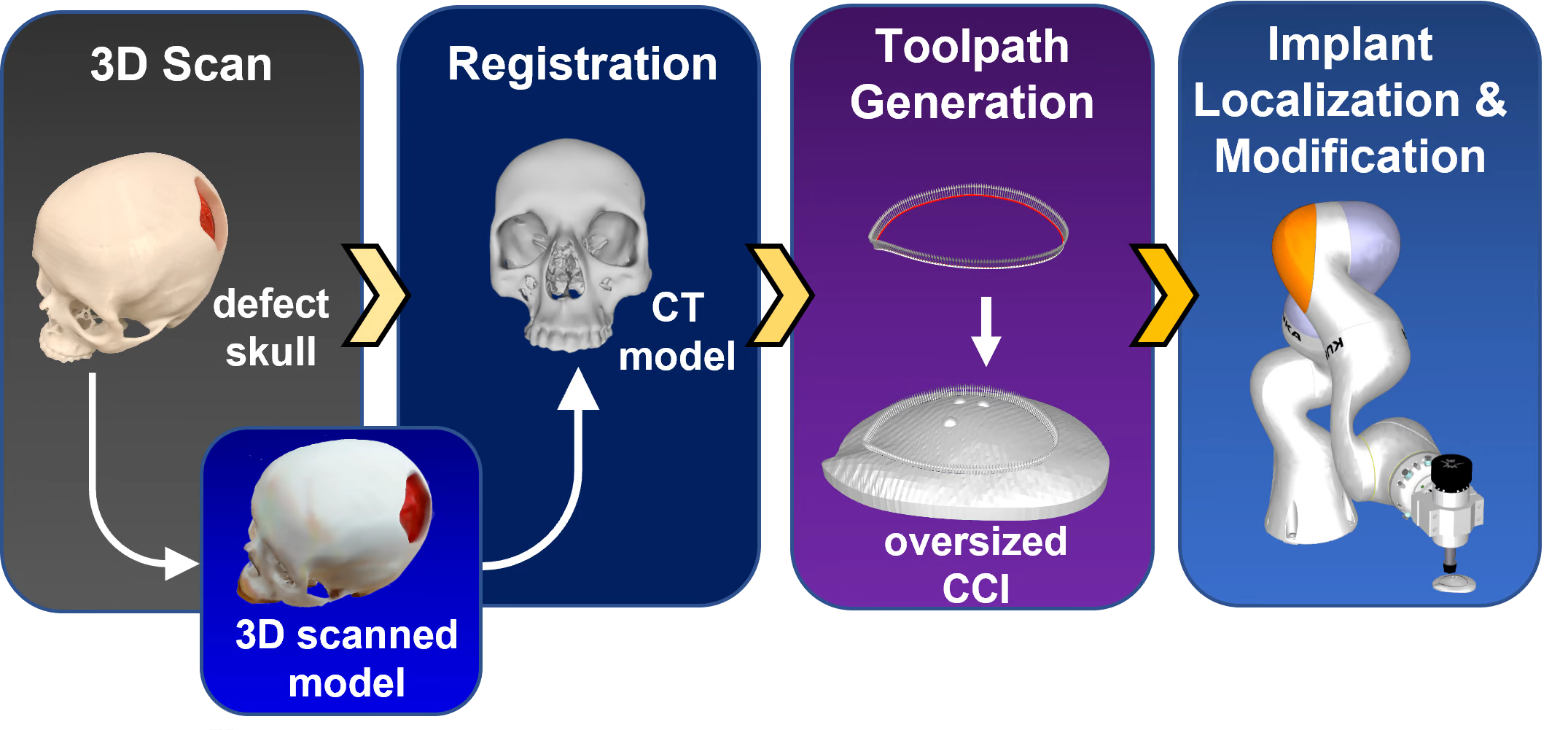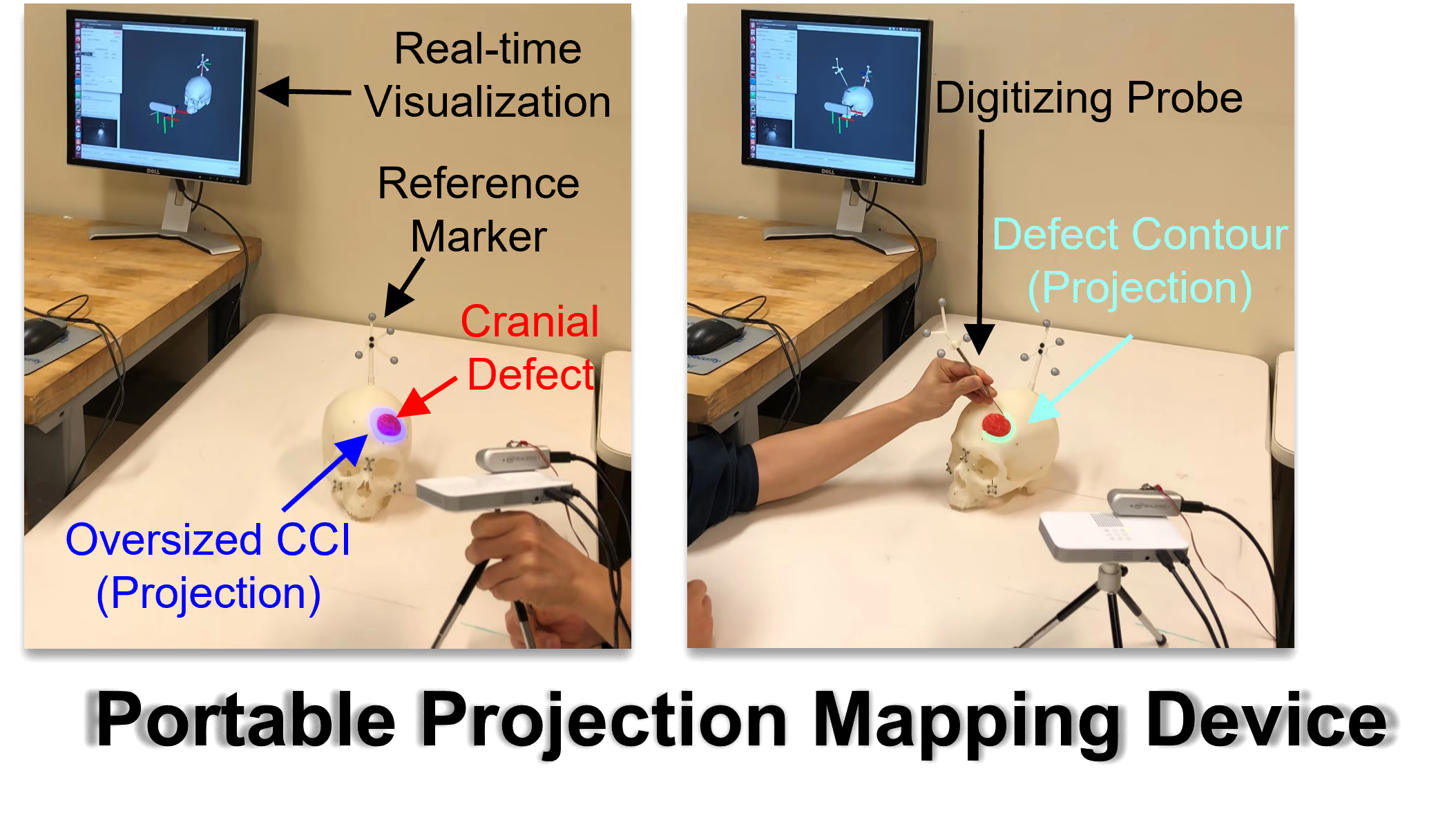Accomplishment
Conventional cranioplasty using cranial implants is performed in two stages and/or involves imprecise and time-consuming manual implant modifications. The manual manipulations are imprecise and may result in large bone gaps and implant failure with post-surgical complications. We propose computer-aided and robotic techniques for a single-stage cranioplasty with customized implants. In the single-stage cranioplasty, skull resection and implant resizing will happen within a single surgery. We have automated this process to achieve faster and more precise implant resizing. Three major systems have been developed: 1) a Portable Projection Mapping Device; 2) a Robotic Implant Modification Platform; and 3) a 5-Axis Laser Cutting Machine. Using a high-resolution 3D scanner to acquire the geometry of a patient’s defect. We then register the geometry to the preoperative implant design using CT data and generating a cutting toolpath. The robot or the customized 3D laser machine will then cut the implant automatically.

Status
Our evaluation showed that systems can achieve faster and more precise implant modification for single-stage cranioplasty


Publications
- M. Armand, S. Liu, W.L. Huang, “Portable Projection Mapping Device and Projection Mapping System,” WO 2021051126A1
- G. Grant, P. Liacouras, C. Gordon, R. Murphy, M. Armand, “Patient-Specific Trackable Cutting Guides,” U.S. Patent Application 16857284, 10/29/2020
- F. Alambeigi, S. Sefati, R. Murphy, M. Armand, C. R. Gordon, S. Liu, "Cutting Machine for Resizing Raw Implants During Surgery," ed: U.S. Patent 10,603,175, 2020
- C. Gordon , M. Armand, R. Murphy, G. Grant, P. Liacouras, K. Wolfe, “Computer-assisted Cranioplasty,” U.S. Patent Application 15529036, 9/28/2017
- K. Wolfe, C. Gordon, R. Murphy, M. Armand, “Cranial Reference Mount,” U.S. Patent Application 15100239 1/5/2017